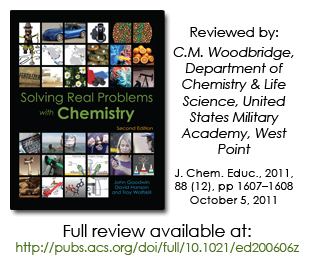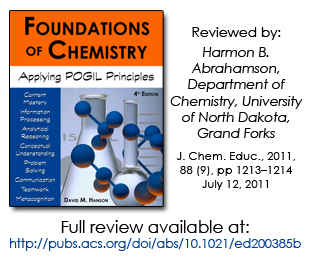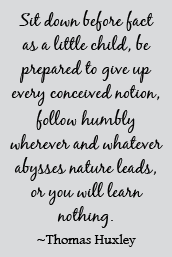|

Solving Real
Problems with Chemistry is a collection of
20 activities designed to reinforce students’
problem solving skills in general chemistry. And
yet, it is not just a book of practice problems for
students. Each is a process-oriented,
guided-inquiry, learning (POGIL) in-context
exercise. Also, each POGIL-IC activity is not simply
a problem, but a practical problem with real-world
applications. Big deal, you might say; all general
chemistry books have these types of problems.
Possibly. However, the problems here are different.
What makes these
problems different is that, first, they have a broad
appeal, and second, they are not only
interdisciplinary; they demonstrate how scientists
and researchers go about solving problems. The
appeal of the exercises is well addressed because,
unlike most problems, the students should easily see
how and why the activity at hand might be applicable
outside of chemistry or science class.
The addition of
assessment and reflection steps are things we have
modeled and frequently see in sample problems but
may seldom see on exam papers or homework exercises
or in labs. The explicit addition of a series of
questions designed to force students to reflect
uponwhat they have just done is a unique feature of
these problems. Assuming time permits, a classroom
discussion of these reflections would be valuable.
The help files range
from pointed questions to guide students along the
path (Cu Help) to general problemsolving tips (Au
Help). This is an interesting idea. It forces
students to critically assess how much help they
really need to complete an exercise and, over time,
should obviate the “I don’t even know where to
start” type of questions that instructors frequently
hear.
According to the
authors, Solving Real Problems with Chemistry
can be used on its own or in conjunction with
Foundations of Chemistry. Whether or not you use
POGIL, this book is worthwhile to read. I found
myself thinking about my general chemistry students
and how I can help them learn to be better problem
solvers after reading this book. I would recommend
this to anyone teaching general chemistry at the
college or high school level.
|

In recent years, my
first-year teaching has been concentrated mostly in
the second-semester General Chemistry II course.
Because of my previous experiences in using POGIL
(process-oriented, guided-inquiry learning) in the
first semester of our general organic biochemistry
course sequence, I wanted to try to incorporate
POGIL activities in my General Chemistry II course.
At my suggestion, the publisher (Pacific Crest)
pulled together a special printing of this fourth
edition containing just the secondsemester
activities that I wanted to use, for a price that
was slightly more than half of the price of the
whole book.
The complete fourth
edition book is organized into 22 chapters, each of
which contains from two to five activities, for a
total of 66 activities. Each chapter covers a set of
topics that are linked by a major concept. The order
and distribution of these topics follows those found
in many typical general chemistry textbooks.
Each activity is a
stand-alone exercise that explores one major topic,
and is designed to be used in a small-group setting
in the POGIL manner. The activities use a structure
that will be familiar to anyone that has used POGIL:
first some information is presented in a model,
which can come in a wide range of styles, from
simple text or tables to diagrams and procedures.
The model is followed by a set of “key questions”
that can be answered by exploring the model. After
this exploration, students (in their small groups)
go on to do simple “exercises” that allow them to
apply their new knowledge and gain confidence. Many
of the activities conclude with one or more
“problems”; these are more complex and require the
synthesis of ideas, transference of learning to new
contexts, or more in-depth problem solving.
In general, I found the
activities to be well written and free of errors.
The number of topics, especially in the
second-semester material, is not enough to be able
to do “all POGIL, all of the time”. In this fourth
edition, the activities are more fleshed-out and
better organized internally when compared to the
first-edition counterparts that I used in a previous
semester; many are also longer. The level of the
activities works well for my general chemistry
course, which has students from a wide range of
majors and previous chemistry experience.
|

